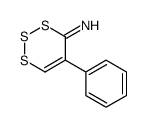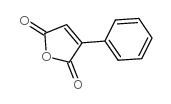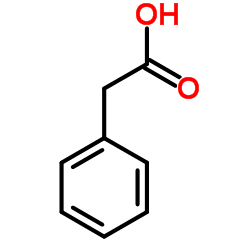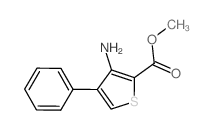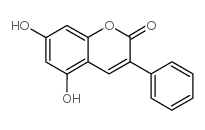5841-70-3
| Name | 2-cyano-2-phenylvinylalcohol |
|---|---|
| Synonyms |
2-CYANO-2-PHENYLACETALDEHYDE
3-Oxo-2-phenylpropionitrile 3-HYDROXY-2-PHENYLACRYLONITRILE formylphenylacetonitrile 2-formyl-2-phenylacetonitrile |
| Density | 1.114g/cm3 |
|---|---|
| Boiling Point | 242.7ºC at 760mmHg |
| Melting Point | 157-160ºC |
| Molecular Formula | C9H7NO |
| Molecular Weight | 145.15800 |
| Flash Point | 100.6ºC |
| Exact Mass | 145.05300 |
| PSA | 40.86000 |
| LogP | 1.49268 |
| Index of Refraction | 1.535 |
| Storage condition | -20°C |
Synonym:2-Cyano-2-phenylacetaldehyde3-Oxo-2-phenylpropanenitril Section 2 - COMPOSITION, INFORMATION ON INGREDIENTS
Risk Phrases: 20/21/22 36/37/38 Section 3 - HAZARDS IDENTIFICATION EMERGENCY OVERVIEW
Harmful by inhalation, in contact with skin and if swallowed. Irritating to eyes, respiratory system and skin. Potential Health Effects Eye: Causes eye irritation. Skin: Causes skin irritation. Harmful if absorbed through the skin. Ingestion: Harmful if swallowed. May cause irritation of the digestive tract. Inhalation: Harmful if inhaled. Causes respiratory tract irritation. Chronic: Not available. Section 4 - FIRST AID MEASURES Eyes: Flush eyes with plenty of water for at least 15 minutes, occasionally lifting the upper and lower eyelids. Get medical aid. Skin: Get medical aid. Flush skin with plenty of water for at least 15 minutes while removing contaminated clothing and shoes. Ingestion: Get medical aid. Wash mouth out with water. Inhalation: Remove from exposure and move to fresh air immediately. If not breathing, give artificial respiration. If breathing is difficult, give oxygen. Get medical aid. Notes to Physician: Section 5 - FIRE FIGHTING MEASURES General Information: As in any fire, wear a self-contained breathing apparatus in pressure-demand, MSHA/NIOSH (approved or equivalent), and full protective gear. Extinguishing Media: Use water spray, dry chemical, carbon dioxide, or chemical foam. Section 6 - ACCIDENTAL RELEASE MEASURES General Information: Use proper personal protective equipment as indicated in Section 8. Spills/Leaks: Vacuum or sweep up material and place into a suitable disposal container. Section 7 - HANDLING and STORAGE Handling: Avoid breathing dust, vapor, mist, or gas. Avoid contact with skin and eyes. Storage: Store in a cool, dry place. Store in a tightly closed container. Section 8 - EXPOSURE CONTROLS, PERSONAL PROTECTION Engineering Controls: Facilities storing or utilizing this material should be equipped with an eyewash facility and a safety shower. Use adequate ventilation to keep airborne concentrations low. Exposure Limits CAS# 5841-70-3: Personal Protective Equipment Eyes: Not available. Skin: Wear appropriate protective gloves to prevent skin exposure. Clothing: Wear appropriate protective clothing to prevent skin exposure. Respirators: Follow the OSHA respirator regulations found in 29 CFR 1910.134 or European Standard EN 149. Use a NIOSH/MSHA or European Standard EN 149 approved respirator if exposure limits are exceeded or if irritation or other symptoms are experienced. Section 9 - PHYSICAL AND CHEMICAL PROPERTIES Physical State: Solid Color: off-white Odor: Not available. pH: Not available. Vapor Pressure: Not available. Viscosity: Not available. Boiling Point: Not available. Freezing/Melting Point: 157 - 160 deg C Autoignition Temperature: Not available. Flash Point: Not available. Explosion Limits, lower: Not available. Explosion Limits, upper: Not available. Decomposition Temperature: Solubility in water: Specific Gravity/Density: Molecular Formula: C9H7NO Molecular Weight: 145.16 Section 10 - STABILITY AND REACTIVITY Chemical Stability: Not available. Conditions to Avoid: Incompatible materials. Incompatibilities with Other Materials: Reducing agents, oxidizing agents, bases, acids, amines. Hazardous Decomposition Products: Hydrogen cyanide, nitrogen oxides, carbon monoxide, carbon dioxide. Hazardous Polymerization: Has not been reported Section 11 - TOXICOLOGICAL INFORMATION RTECS#: CAS# 5841-70-3 unlisted. LD50/LC50: Not available. Carcinogenicity: 3-Hydroxy-2-phenylacrylonitrile - Not listed by ACGIH, IARC, or NTP. Section 12 - ECOLOGICAL INFORMATION Section 13 - DISPOSAL CONSIDERATIONS Dispose of in a manner consistent with federal, state, and local regulations. Section 14 - TRANSPORT INFORMATION IATA Shipping Name: NITRILES, SOLID, TOXIC, N.O.S.* Hazard Class: 6.1 UN Number: 3276 Packing Group: III IMO Shipping Name: NITRILES, TOXIC, N.O.S. Hazard Class: 6.1 UN Number: 3276 Packing Group: III RID/ADR Shipping Name: NITRILES, TOXIC, N.O.S. Hazard Class: 6.1 UN Number: 3276 Packing group: III Section 15 - REGULATORY INFORMATION European/International Regulations European Labeling in Accordance with EC Directives Hazard Symbols: XN Risk Phrases: R 20/21/22 Harmful by inhalation, in contact with skin and if swallowed. R 36/37/38 Irritating to eyes, respiratory system and skin. Safety Phrases: S 26 In case of contact with eyes, rinse immediately with plenty of water and seek medical advice. S 36/37/39 Wear suitable protective clothing, gloves and eye/face protection. WGK (Water Danger/Protection) CAS# 5841-70-3: No information available. Canada None of the chemicals in this product are listed on the DSL/NDSL list. CAS# 5841-70-3 is not listed on Canada's Ingredient Disclosure List. US FEDERAL TSCA CAS# 5841-70-3 is not listed on the TSCA inventory. It is for research and development use only. SECTION 16 - ADDITIONAL INFORMATION N/A |
|
~83% 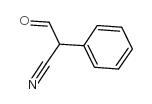
5841-70-3 |
| Literature: Stoutamire, Donald Wesley Patent: US2008/153905 A1, 2008 ; Location in patent: Page/Page column 7 ; |
|
~80% 
5841-70-3 |
| Literature: Ueno, Satoshi; Maeda, Ryohei; Yasuoka, Shohei; Kuwano, Ryoichi Chemistry Letters, 2013 , vol. 42, # 1 p. 40 - 42 |
|
~% 
5841-70-3 |
| Literature: Chemistry Letters, , vol. 42, # 1 p. 40 - 42 |
|
~% 
5841-70-3 |
| Literature: Journal of Organic Chemistry, , vol. 26, p. 644 - 651 |
|
~% 
5841-70-3 |
| Literature: Chemische Berichte, , vol. 46, p. 2931 Comptes Rendus Hebdomadaires des Seances de l'Academie des Sciences, , vol. 151, p. 235 Bulletin de la Societe Chimique de France, , vol. <4> 7, p. 847,850 Comptes Rendus Hebdomadaires des Seances de l'Academie des Sciences, , vol. 151, p. 1358 Bulletin de la Societe Chimique de France, , vol. <4> 9, p. 651 |
|
~% 
5841-70-3 |
| Literature: Journal fuer Praktische Chemie (Leipzig), , vol. <2> 55, p. 323 |
|
~% 
5841-70-3 |
| Literature: Comptes Rendus Hebdomadaires des Seances de l'Academie des Sciences, , vol. 151, p. 235 Bulletin de la Societe Chimique de France, , vol. <4> 7, p. 847,850 |
|
~% 
5841-70-3 |
| Literature: Justus Liebigs Annalen der Chemie, , vol. 291, p. 202 |
|
~%
Detail
|
| Literature: Journal fuer Praktische Chemie (Leipzig), , vol. <2> 55, p. 323 |
| Precursor 9 | |
|---|---|
| DownStream 10 | |
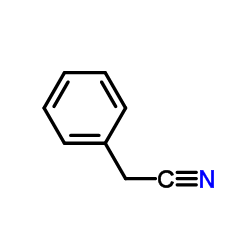
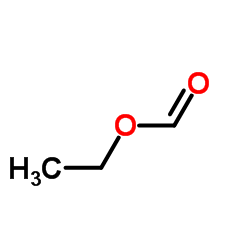
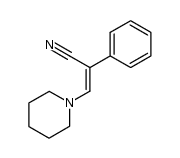

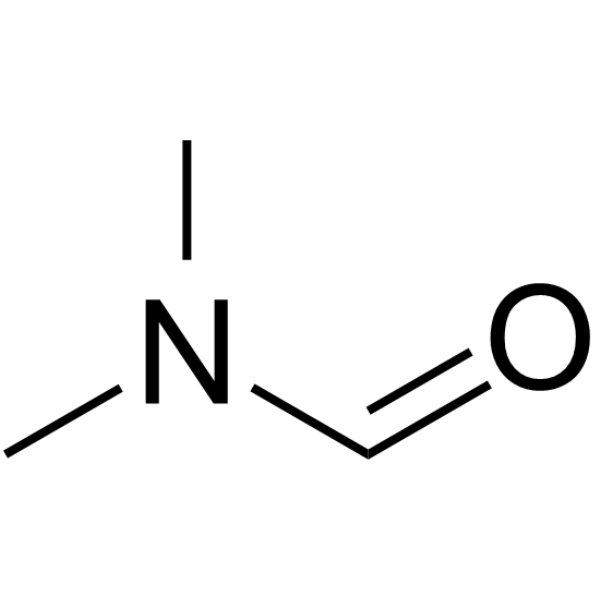
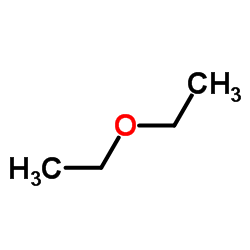



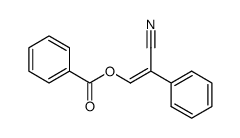


![3-Bromo-6-phenylpyrazolo[1,5-a]pyrimidin-7-amine structure](https://image.chemsrc.com/caspic/149/1039364-82-3.png)
